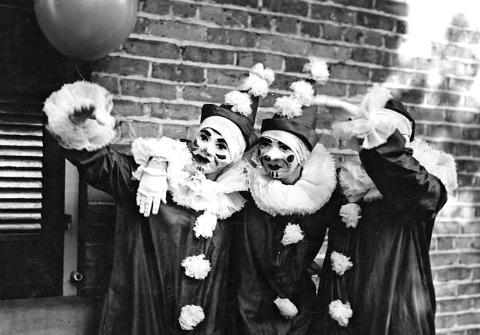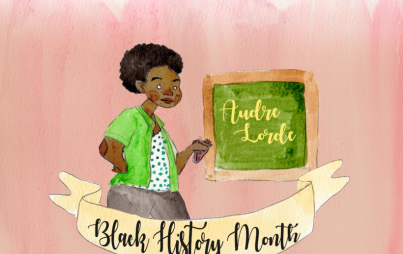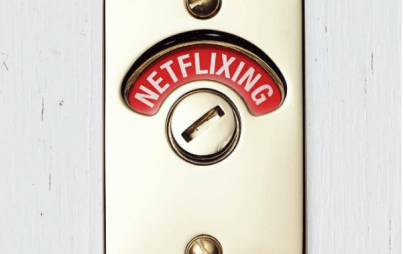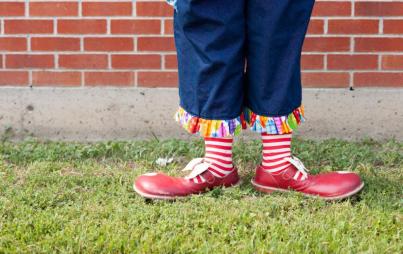
Wikimedia
If you’re anything like us, clowns were an unfortunate—but all-too-common presence—in your childhood. They probably either high-jacked your nightmares or ruined your could-have-been-awesome birthday parties, because clowns manage to hit the sweet spot of being terrifying and annoying as hell.
But obnoxious/shiver-inducing as these color-blasted comics seem to us normal folk, clowns have long served specific social functions. They take aim at social conventions and satirize common institutions of life, all while reinforcing social rules as audiences laugh or recoil at their unruly behavior. Dressing up like deranged geishas and negating the laws of physics by cramming into tiny cars with an unholy number of their comrades? Oh yes, they’re screwing with us all.
So what kind of society would create such minions of trickery? Turns out, nearly all of them: Love ‘em or hate ‘em, anthropologists have found that clown-like characters appear to be a near-universal phenomenon; they're a straight-up archetype. Here are three international case studies in clownery from the past.
China
China developed a robust tradition of court jesters even before Europe—as far back as 676 BC. Though jesters have the reputation of being fools without an ounce of self-respect, they sometimes acted as respected political advisors empowered to warn rulers of potential folly through humor and satire.
Records describe one such incident, in which two Chinese court jesters performed a skit to comment on the emperor’s decision to stop minting the equivalent of pennies. One jester acted as a vendor selling drinks for a penny, and the other as a customer. Neither person had change for a dime, so the customer had to buy 10 drinks (What? Crazy!). Hilarity ensued as he huffed and puffed while downing each drink, and lamented his over-expenditure. The goofy dramatization worked, and the emperor ordered the continued minting of the penny coin.
Clowns: 1; Penny fascists: 0.
Europe
In Medieval Europe, court jesters didn’t hold a monopoly on making things awkward; clowning around extended to the public during the church’s Feast of Fools (dramatized in The Hunchback of Notre Dame). On this topsy turvy holiday, people flaunted normal social constraints. The lowest sub-deacon was bishop for the day—men dressed as women, and women as men. Thank goodness Focus on the Family wasn’t around to see such church-sanctioned abominations! One historian explained the festival acted “like a safety valve” in which people “could do the things they always wanted to do but were afraid to.” Impish desires satisfied, the public would go back to being dutiful townsfolk for another 364 days (at least in theory).
(Native) America
Most Native American tribes also had clown figures in their customs. The Lakota had roles of trickster spirits who played devil’s advocate. By demonstrating improper behavior, the tricksters served to inversely provide greater awareness of the merit of social rules. Plains Indians had contrary figures like “mudhead” clowns who were instrumental in land fertility ceremonies. During these rites, the mud-heads engaged in delightful antics of snatching up children and running away with them.
As the tribe proceeded to ritually chase the kidnappers, the clowns would jettison some of the children—who represented the animals the hunters would miss in the coming year, divinely spared to maintain their herds. The unlucky imprisoned children represented the spirits of slain animals. But all ended happily: the children would be given gifts as an apology to them, and as a symbol of thanks to the slain animals. This ritual probably guaranteed that clowns haunted the dreams of little Native American tykes too—it’s a small, small world.
So while it seems that clowns of history demonstrated social norms in a fairly light-hearted way, the modern age likes to be more polarized, offering clowns that are either zany as shit, or utterly terrifying. Anyone care to analyze that evolution?






